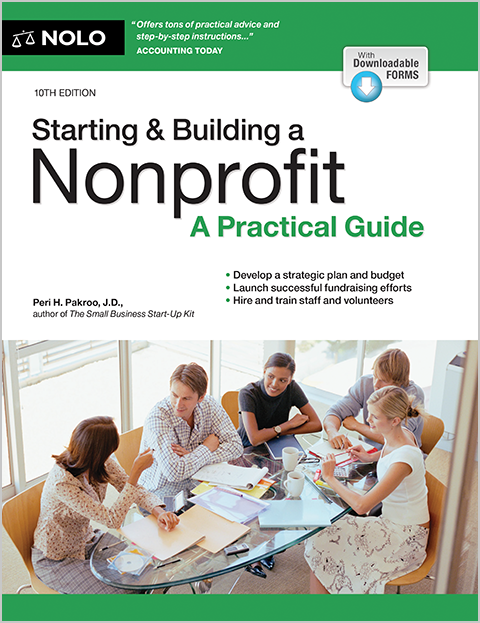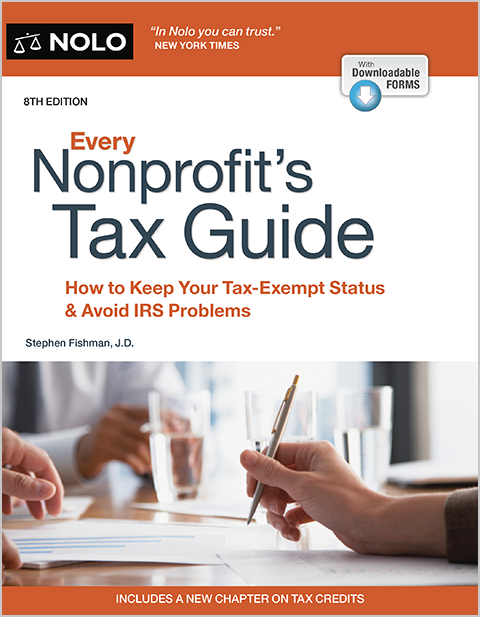Plan ahead for a bidding extravaganza!
A live auction can be a great way to raise funds for your nonprofit, particularly if it has:
- a good-sized corps of volunteers
- access to an appropriate venue
- enough interested members to show up and bid at reasonably high levels, and
- contacts with merchants, professionals, or skilled members who will donate items for bidding or provide sponsorships and other assistance.
Even amidst a difficult fundraising climate, studies show that nonprofits are currently running more auctions than ever, and bringing in higher-than-ever revenue. Perhaps it's a way for people feeling tense about the economy to at least know that they're getting something in return for their donation.
You can make a live auction its own, "main event." Or you can combine it with some other event, such as a gala dinner, so as to ensure that no one goes home without having been offered lots of ways to support your organization.
But don't underestimate the work involved. You'll need to start planning around five to eight months ahead of time, and take care of the preparatory steps described below.
- 1. Set Budgetary and Related Goals
- 2. Set a Date and Location
- 3. Choose an Auctioneer
- 4. Send Out Invitations
- 5. Solicit Donations of Goods and Services
- 6. Prepare Written Materials
- 7. Promote and Publicize the Event
- 8. Set Up Displays of Auction Items
- 9. Set Up a Checkout System
- 10. Plan "Day of Event" Assignments
1. Set Budgetary and Related Goals
To make sure your auction will earn money, it helps to identify workable goals for the number of people who will attend, how many items will be available for bidding, and how much these items will earn upon sale.
Run some numbers to make sure your event will be profitable, and help plan what items you'll need to solicit for loan or donation. Your major expenses, depending on your existing assets and what you're getting donated, are likely to include a hall rental, food and beverages, decorations, an excellent sound system, printing of catalogs and programs, clipboards and pens, and the auctioneer or Web host's fee. Ask around to see if a member will provide one for ferrying auction items to the hall—if not, you might need to rent one.
On the income side, you might plan to charge admission, sell ad space in your catalog, solicit business sponsorships (along with donations of goods), hold raffles or balloon pops, sell a signature drink, and of course, bring in profits from the items auctioned off.
2. Set a Date and Location
Many nonprofits choose to hold auctions in the fall, for people beginning to buy holiday gifts but not yet in a state of shopping fatigue. Weekend evenings are generally best, so that guests won't mind staying late. If there's a reason to choose a weekday, consider starting early, such as at 5:30. Plan to feed them dinner, too.
If you've already got a location in mind, perhaps your school's auditorium or board member's extra-large living room, great, If not, this is one of the earliest details you'll need to take care of, both to make sure the venue is available, and so you can announce it in any "Save the Date" notifications or on your website.
Location is a major factor in the success of your event. Look for a venue that's indoors, large enough to not only seat your intended audience and let them socialize but also to display items you plan to sell; yet not so large that guests feel lost or warehoused. It should also be well-lit, convenient for your likely attendees, and otherwise in keeping with the intended mood of the event.
3. Choose an Auctioneer
The services of a professional auctioneer—who might, in fact, come with a staff of helpers—will probably cost several thousand dollars (sometimes depending on your earnings level). Of course, a true professional will earn back the salary and then some, through the art of pacing the bidding appropriately, inspiring audience enthusiasm, and knowing how to deal with issues like a lull in the bidding.
4. Send Out Invitations
Charity auctions tend to attract members of your group more than the world at large, so to make it a success, send members Save the Date emails as soon as you've got the basic date, time, and place worked out—up to five months beforehand. Follow those with printed invitations, from 60 to 90 days before the event.
Ask people to RSVP by buying tickets ahead of time. That avoids having people change their minds last-minute, and reduces the amount of cash handled by your registration people.
5. Solicit Donations of Goods and Services
The key to making your auction profitable is to auction off mostly or entirely donated goods. Even items that attract low bids are pure profit for you—and will bring back the bargain hunters in subsequent years. Get this process started as soon as you know the date of your event. Having a committee of volunteers begin soliciting items three to six months before the event is optimal.
Your auction should have something for every type of audience member. Popular items include tickets for travel, recreation, and sports; celebrity and sports memorabilia; gift certificates for dining, culture, and entertainment; health and beauty products and services (spa gift certificates are popular); arts and crafts and home décor; electronics; professional services; internships for young people; gifts for children; and packages or unique experiences combining any of the above.
Definitely offer items that fit the mission of your nonprofit, for example pet-related items if you run an animal shelter. Also prepare at least one or two big-ticket items, like a trip to Hawaii or a local ski resort.
6. Prepare Written Materials
For both internal purposes and for the public, prepare some or all of the following:
- master list of items available for bidding
- seating chart (unless your auction will be very informal, a seating chart can help make sure that potential top bidders are well placed in the room).
- auction catalog
- event program
- bidding instructions
- bid sheets (for a silent auction only)
- recorder sheets (for a live auction only), and
- pickup receipt forms.
7. Promote and Publicize the Event
If you're lucky, your invitations alone will be enough to lure people to your event—but additional promotion might be necessary. When publicizing an auction, generate excitement by describing some of the major items up for bidding. Also challenge each of your leaders and core volunteers to sell a certain number of tickets.
8. Set Up Displays of Auction Items
With live auctions, it's customary to display items separately, at the opening of the event, before they're moved to the stage for the actual auction. Your goal is to create visually appealing displays and to give people a chance to decide what they want.
Protect high-value or easily lifted items by either putting them in a display case, having a volunteer guard the table, or simply keeping them in storage and putting up photos or a storyboard. The latter is useful for gift certificates, too. You can also get creative, perhaps by having a volunteer walk around modeling an expensive necklace.
The final touch should be a large poster or banner with your organization's name and logo placed on the front of or over the podium where the auctioneer will stand, to remind the audience that their bids are all for a good cause.
9. Set Up a Checkout System
One of the biggest challenges in holding an auction comes at the end, when you need to collect payment and unite the bidders with their goods. The idea is that people show their bidder number, confirm what they owe after being given an electronically calculated total, pick up their items, and leave. If this process is slow, people may walk out the door without paying. The larger nonprofits commonly hire someone to handle checkout, either the company providing the auctioneer, or a service such as greatergiving.
10. Plan "Day of Event" Assignments
Figure out every possible task that people might need to handle on auction day, and then either assign volunteers or hire professionals to carry them out. For the more complex roles, you'll want to hold trainings. The most important job assignments include, for example, people for setup, registration, child care, photographs, checkout, cleanup crew, and money counting and deposit.
Now, all you need to do is hold the auction! Actually, that's not entirely true. After taking the time to celebrate, be sure to compile your records on what occurred, send out thank you letters to donors, and evaluate what could be done better next time.
- 1. Set Budgetary and Related Goals
- 2. Set a Date and Location
- 3. Choose an Auctioneer
- 4. Send Out Invitations
- 5. Solicit Donations of Goods and Services
- 6. Prepare Written Materials
- 7. Promote and Publicize the Event
- 8. Set Up Displays of Auction Items
- 9. Set Up a Checkout System
- 10. Plan “Day of Event” Assignments




